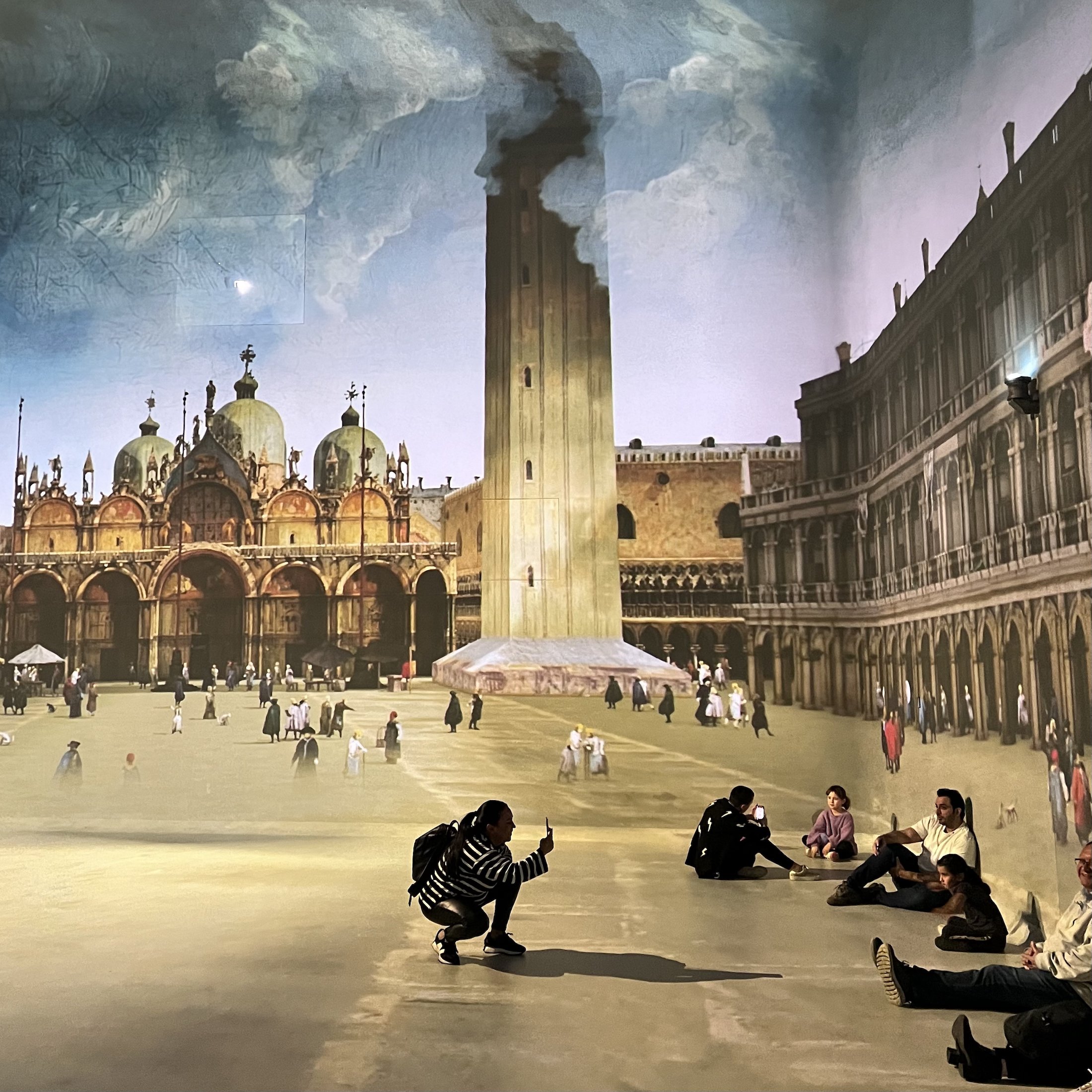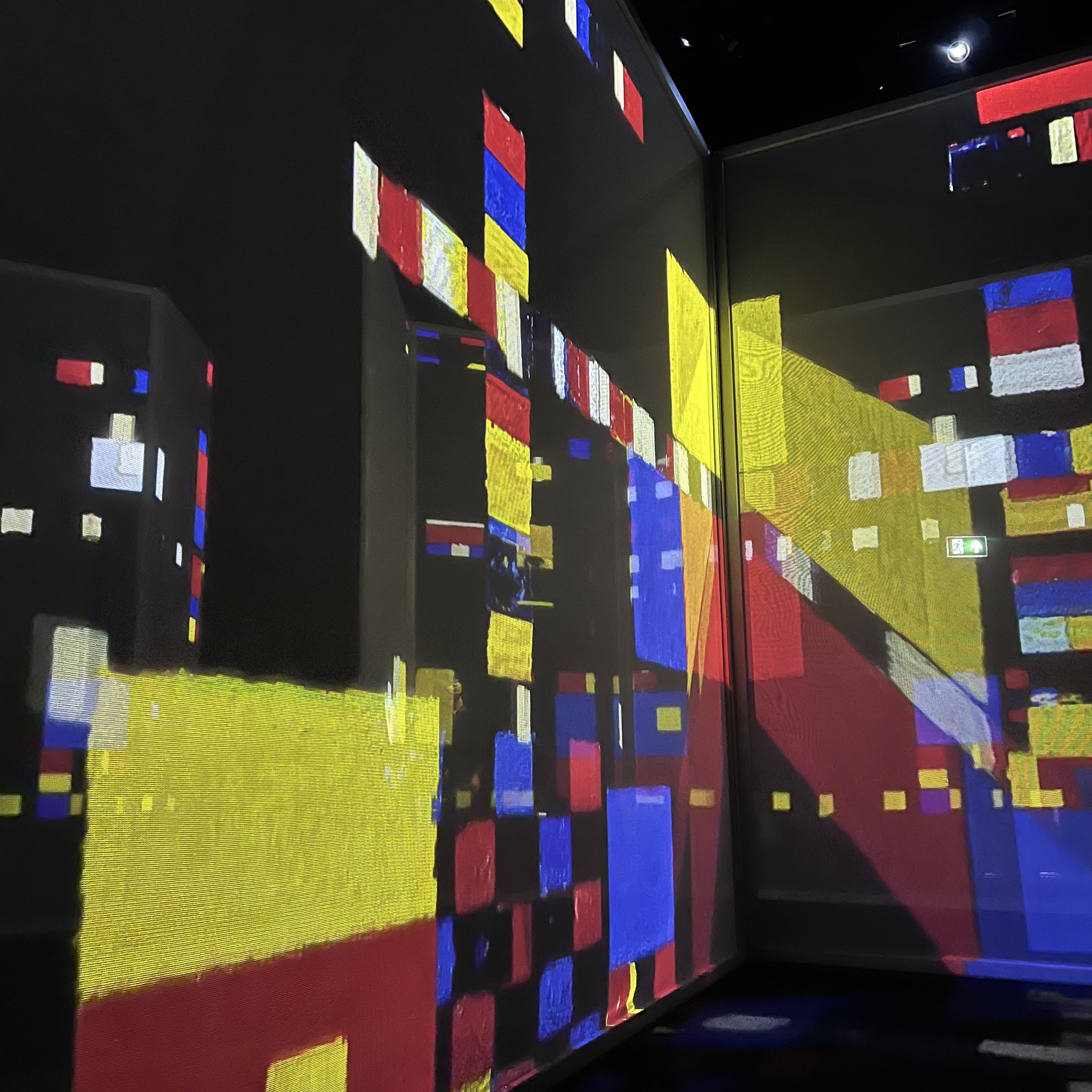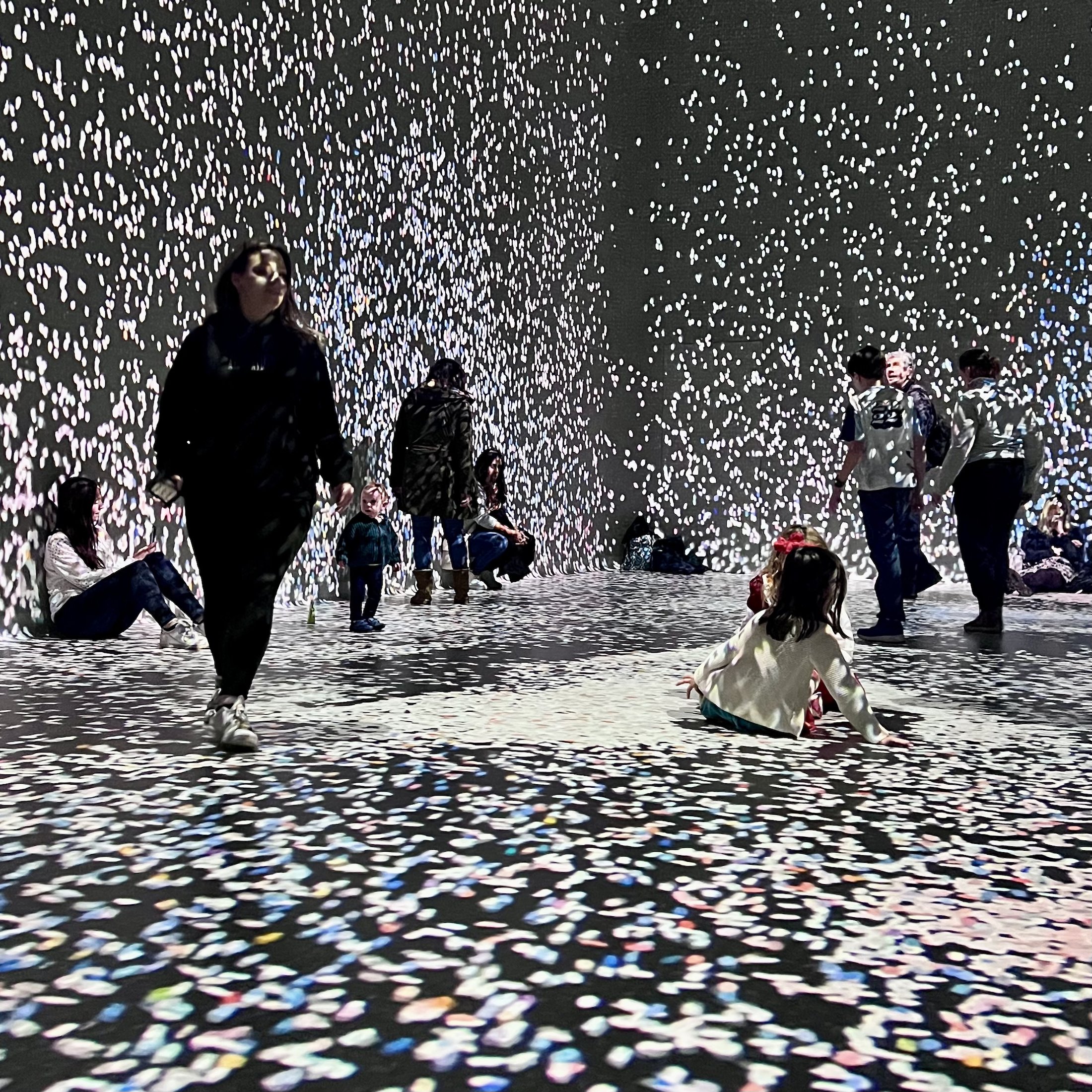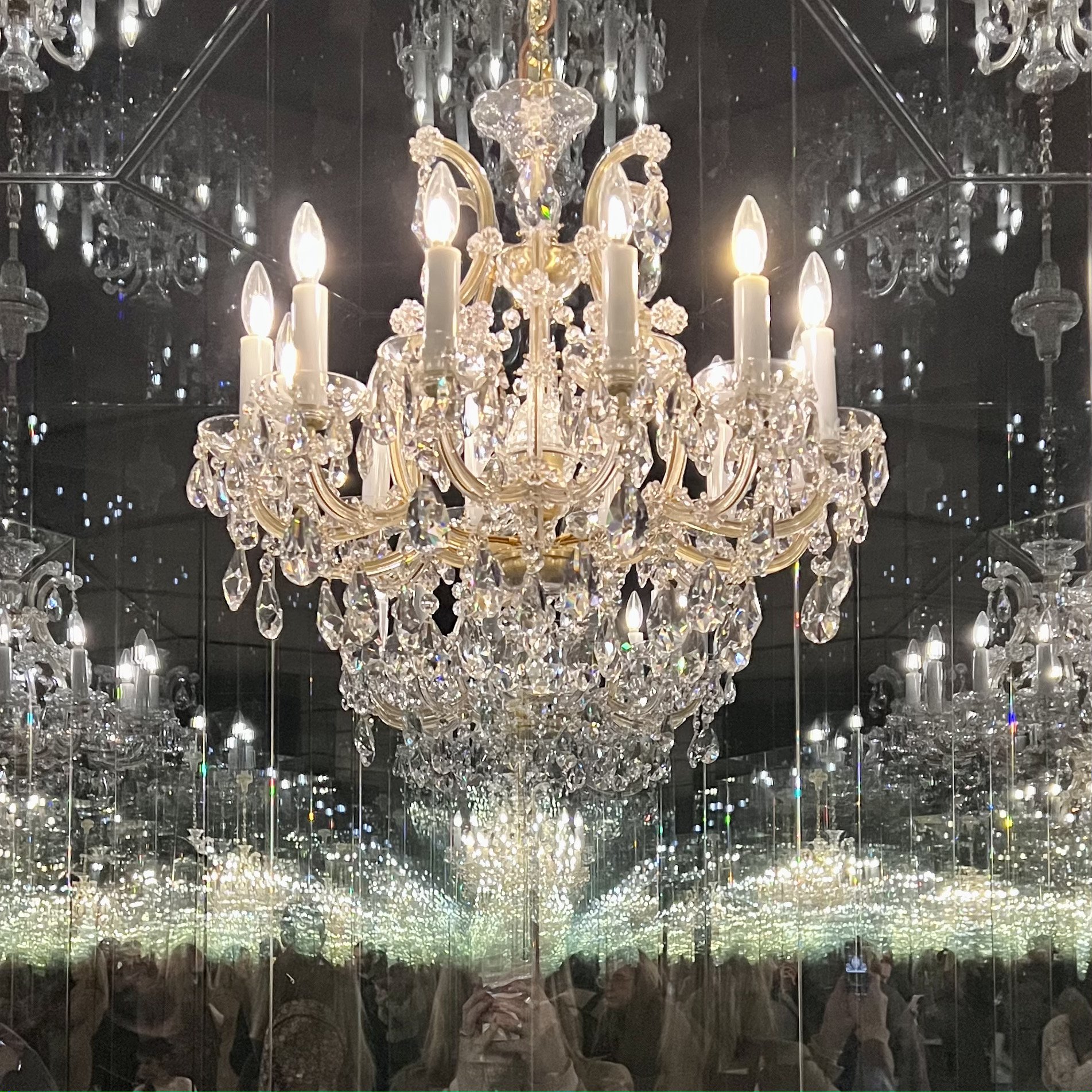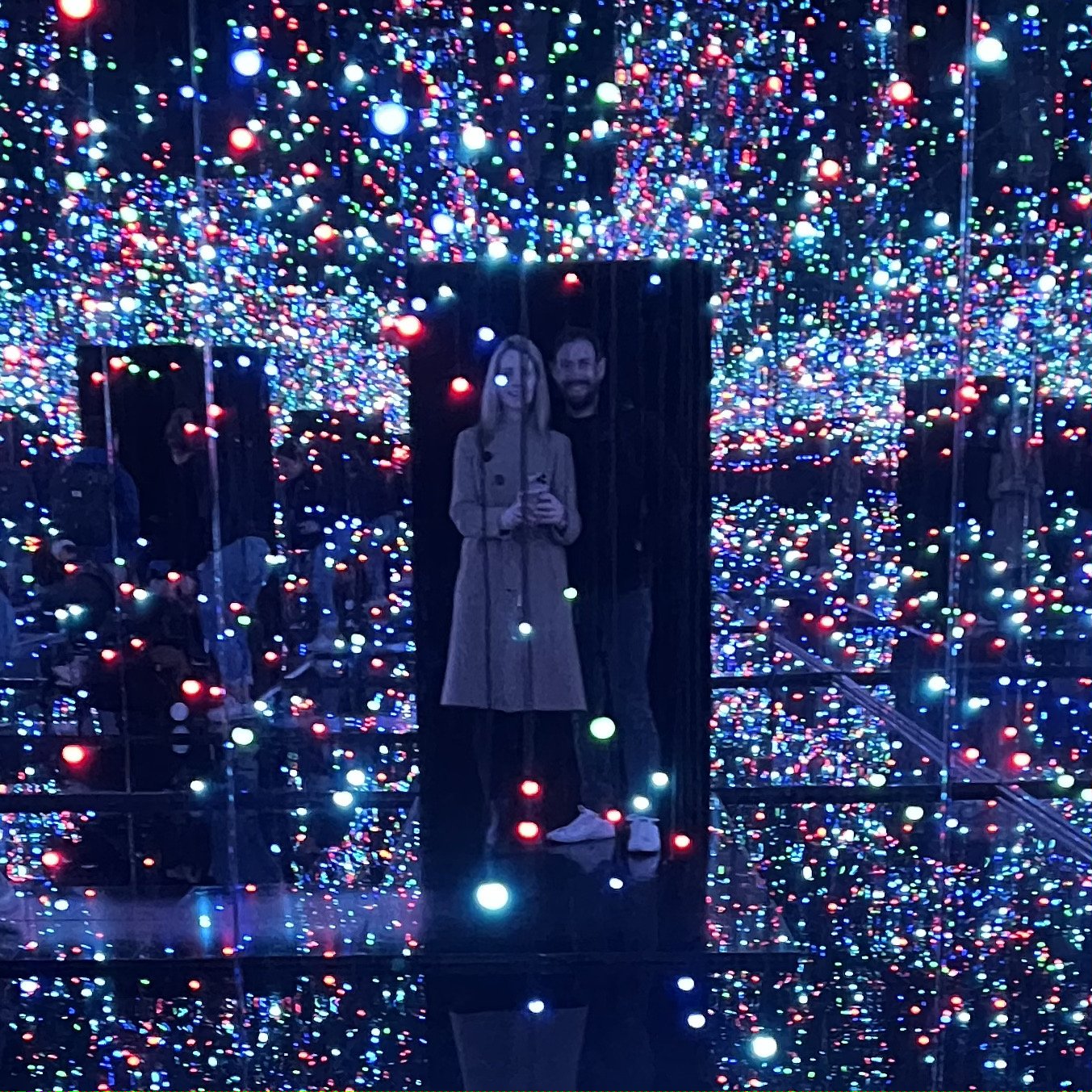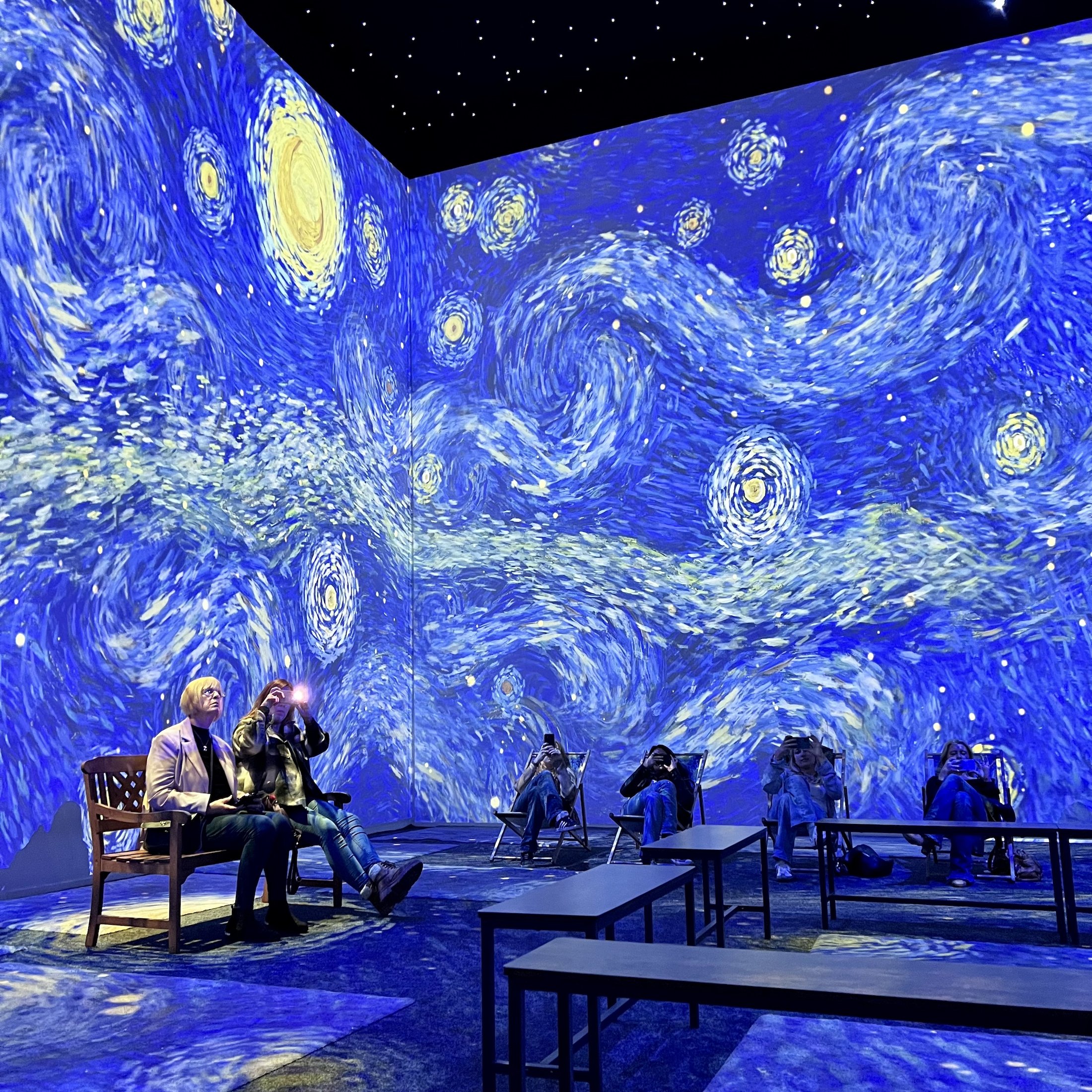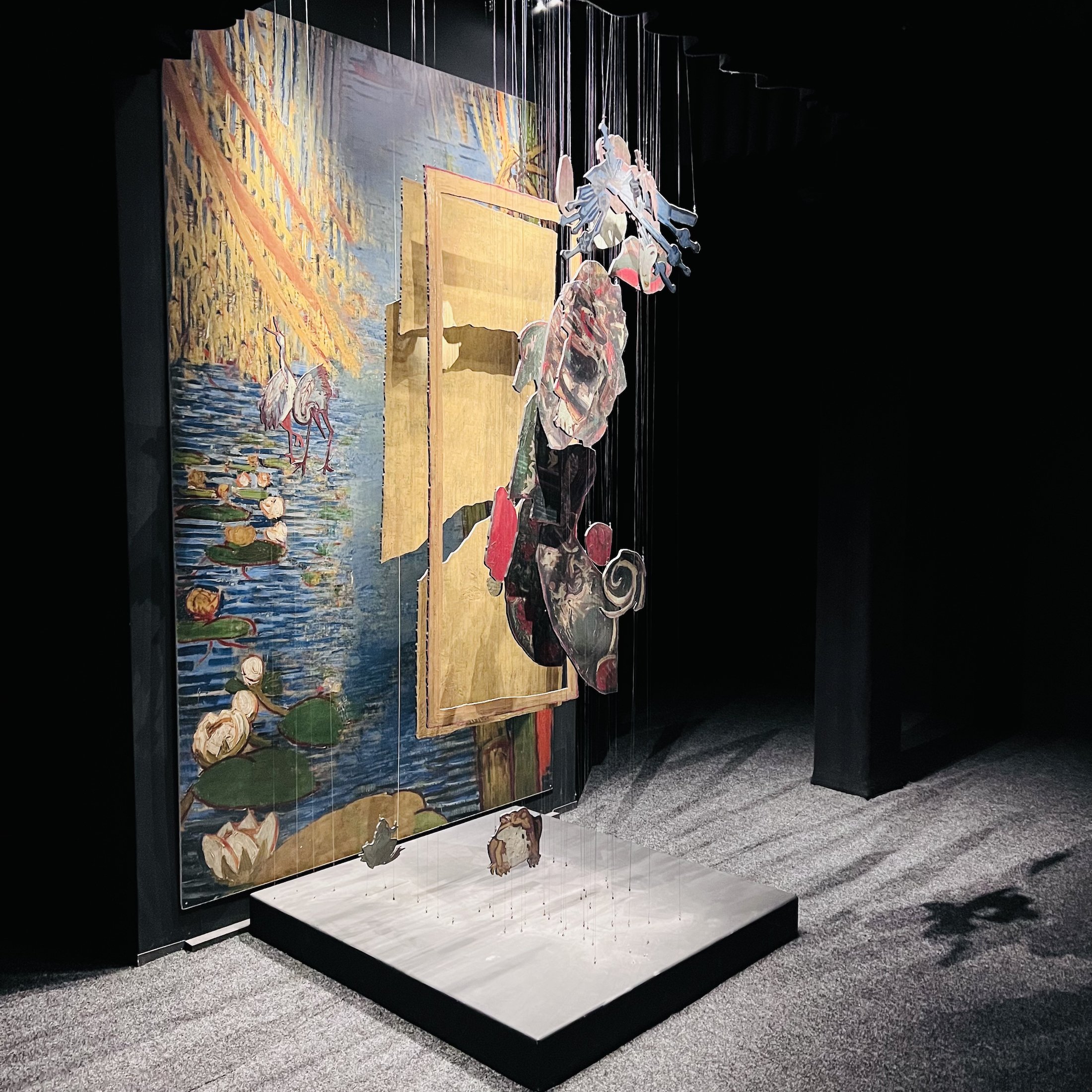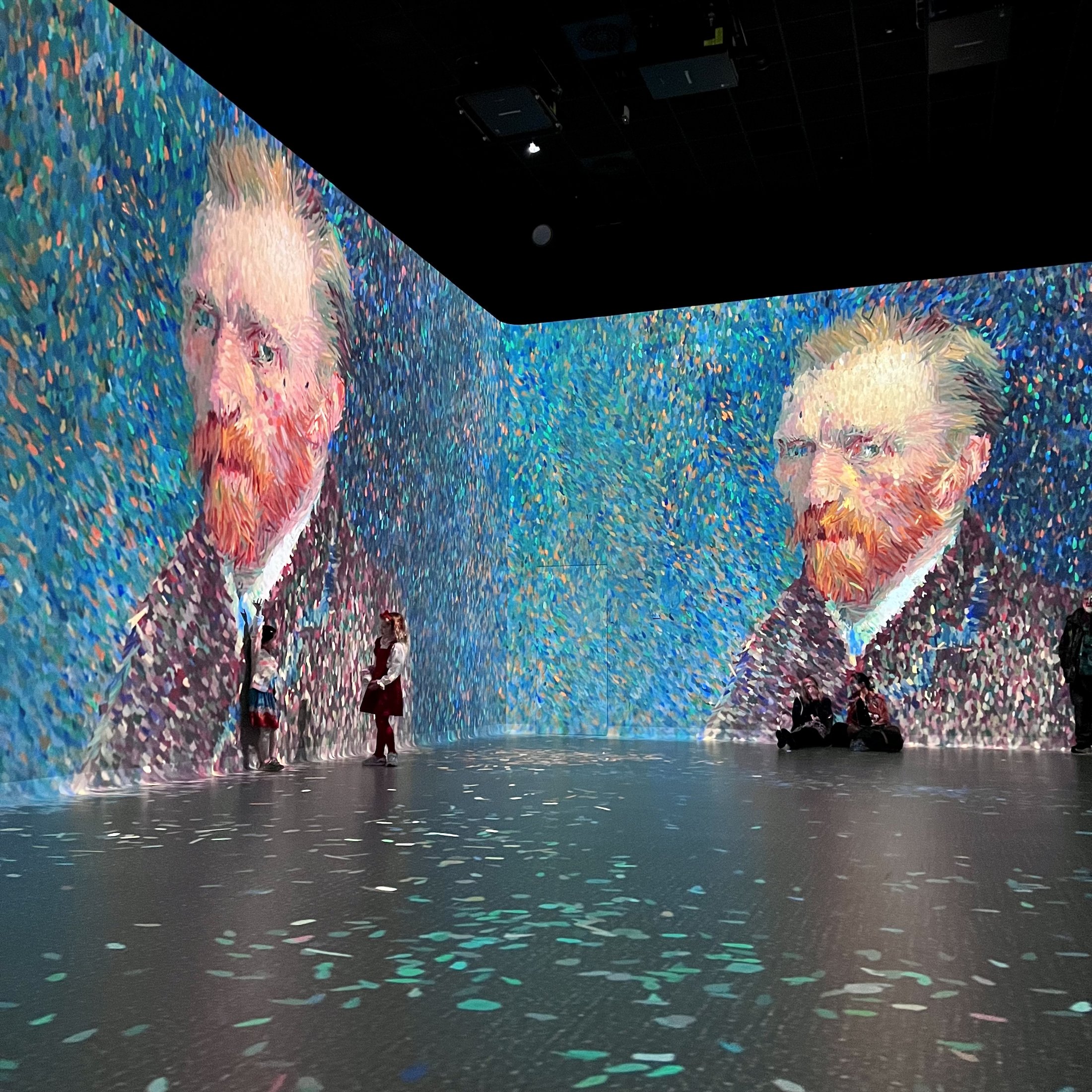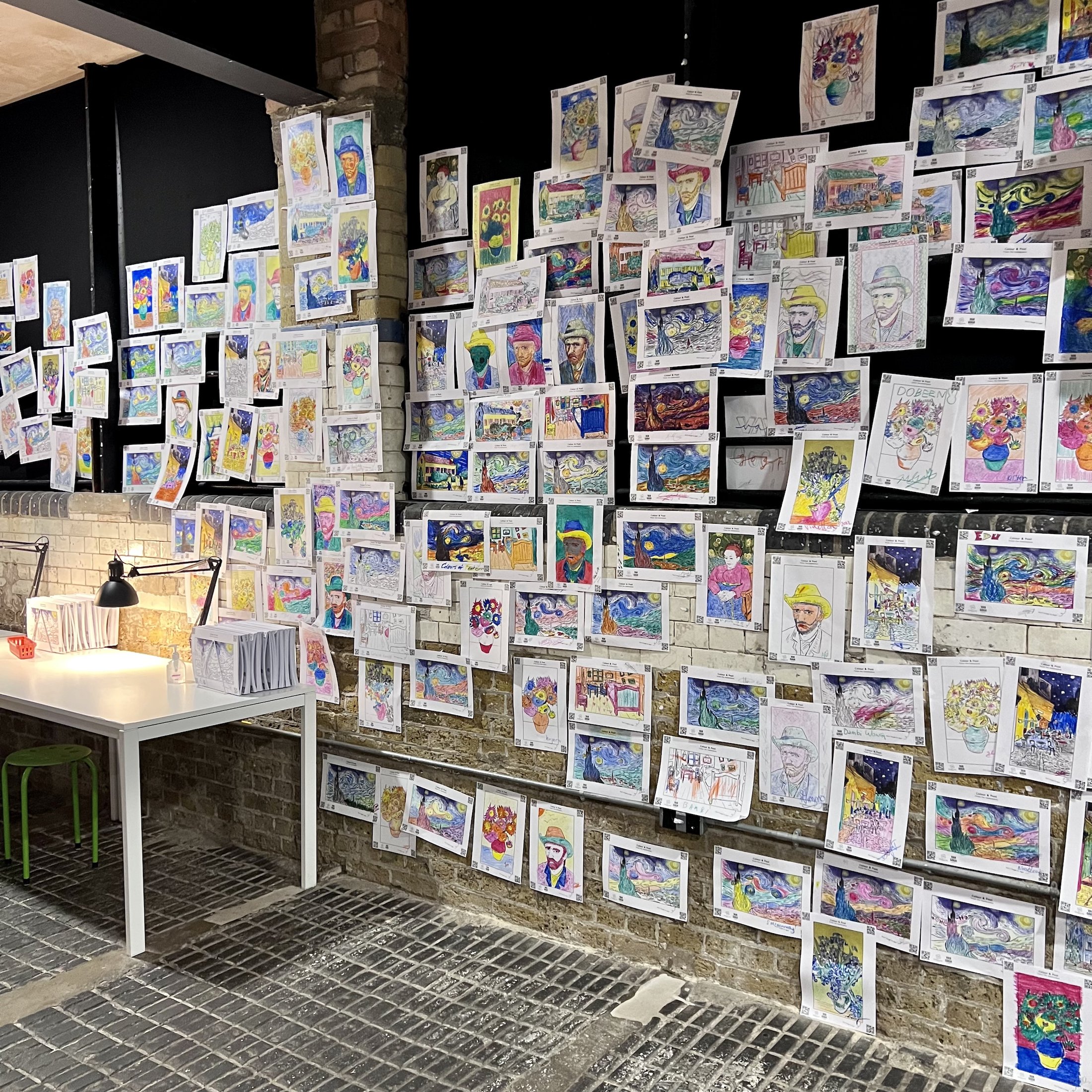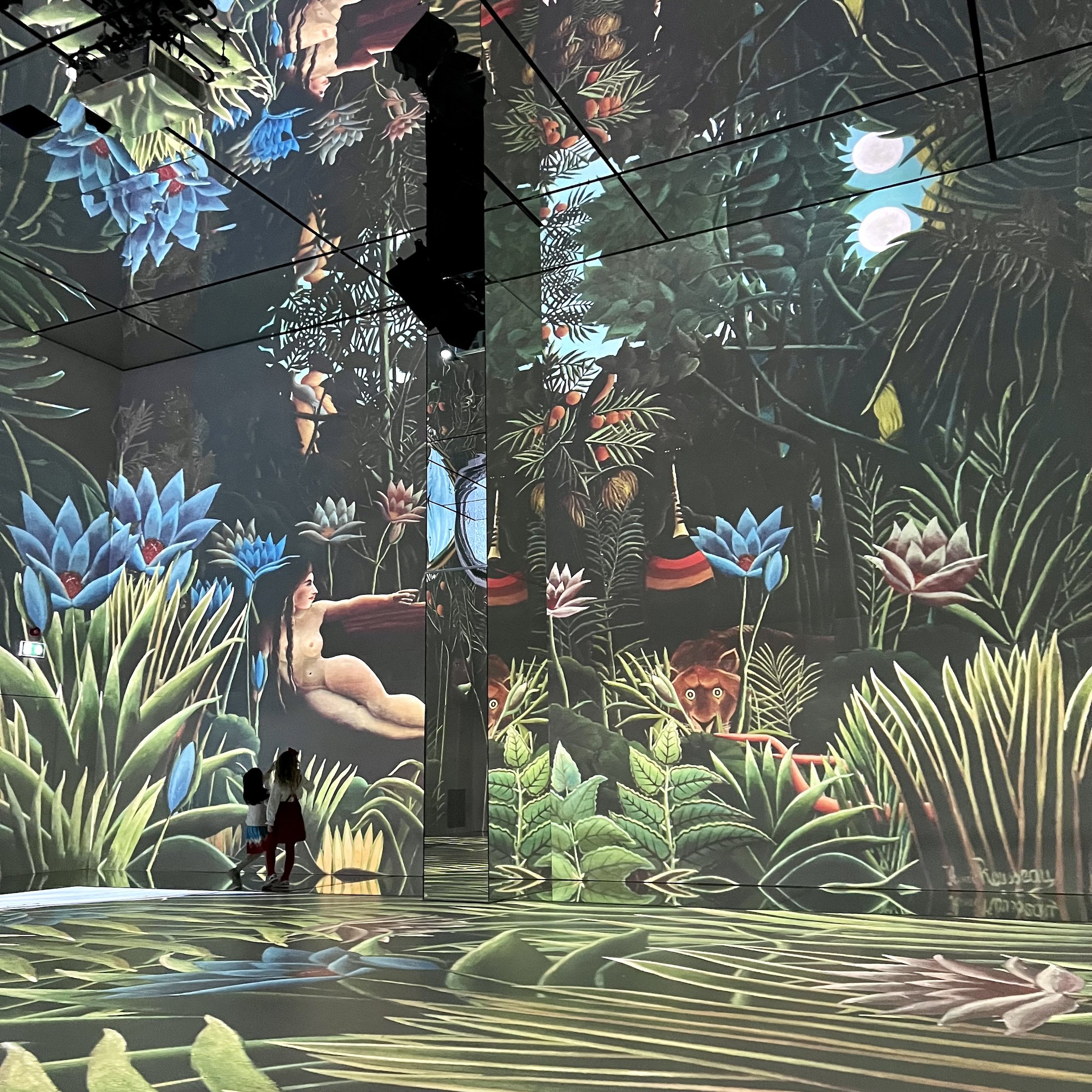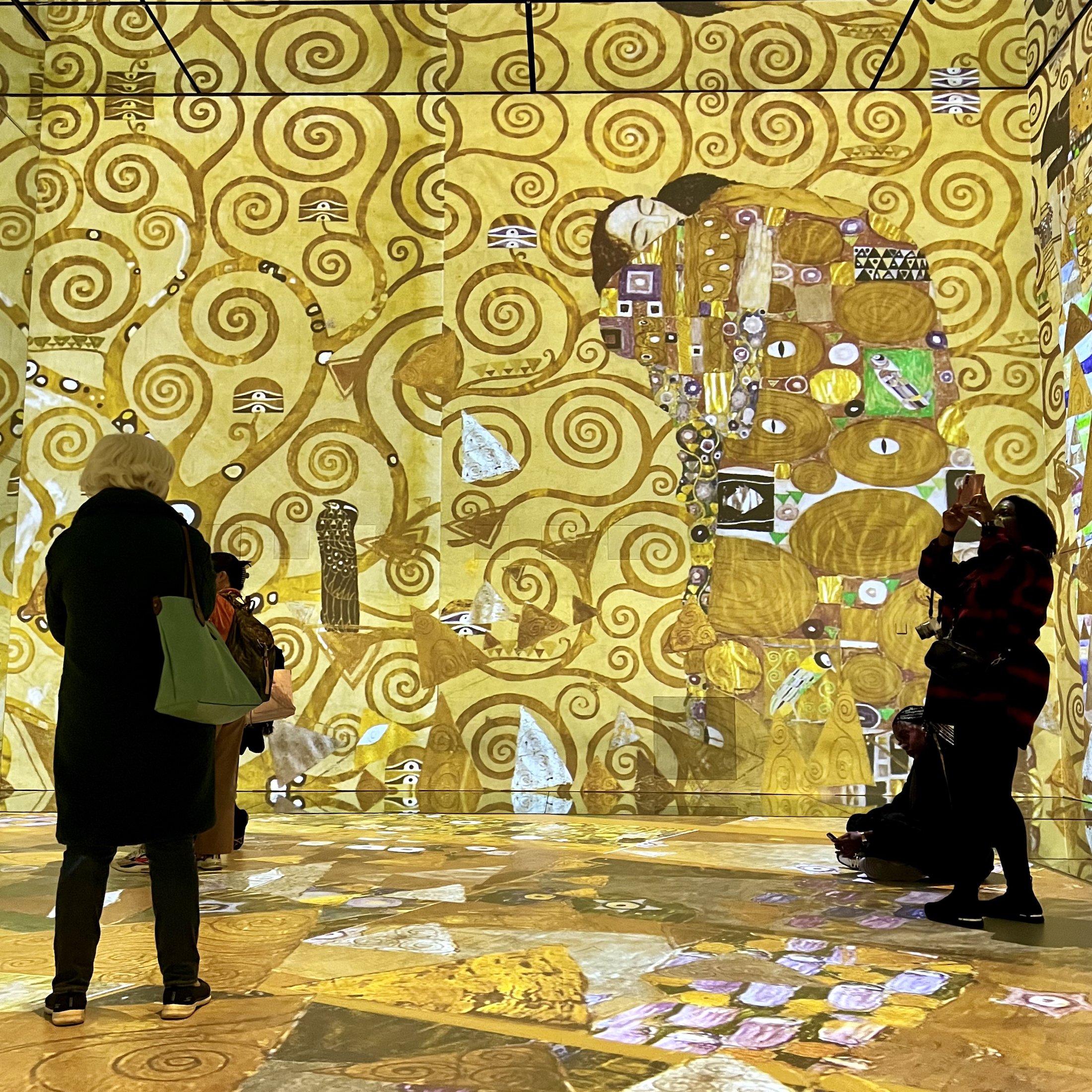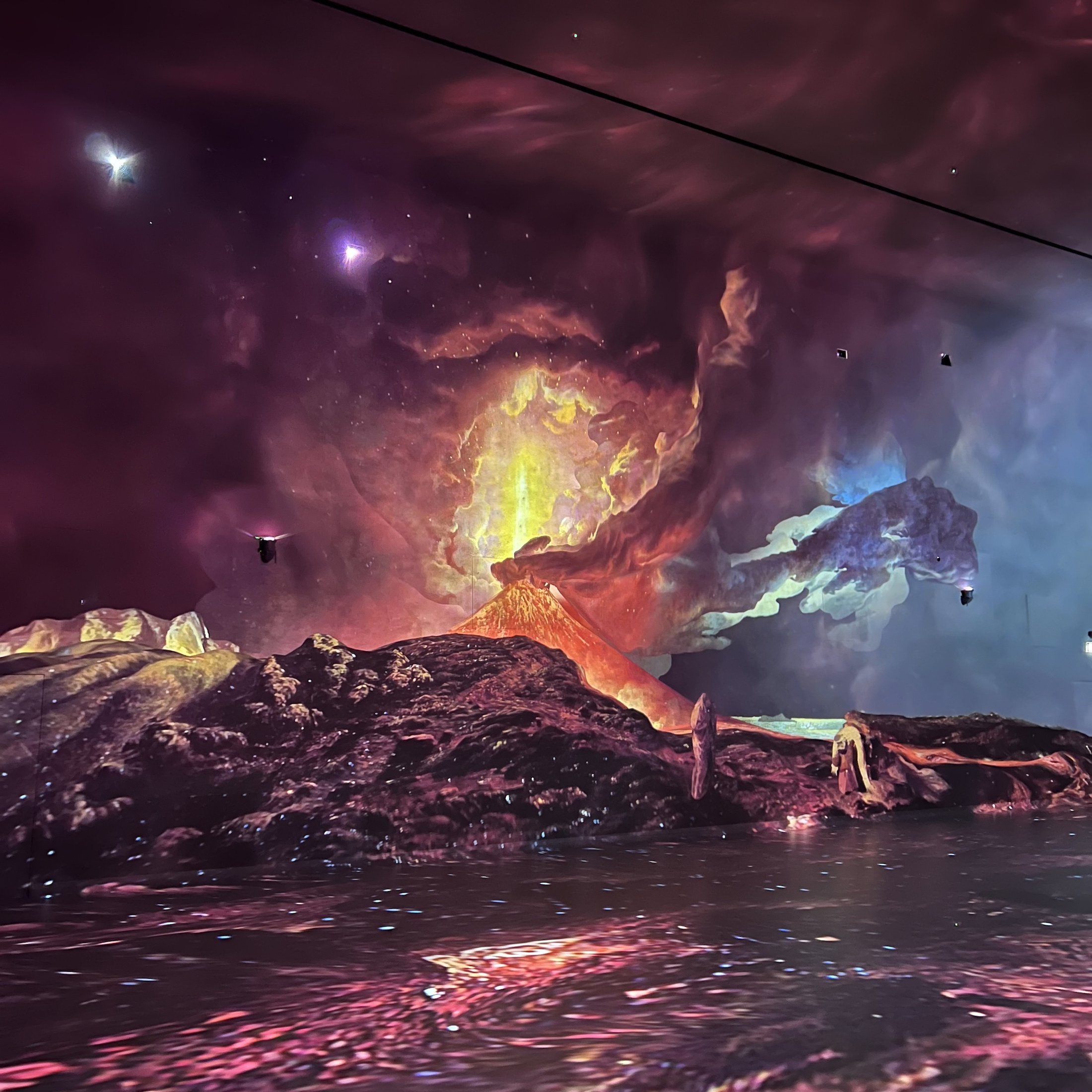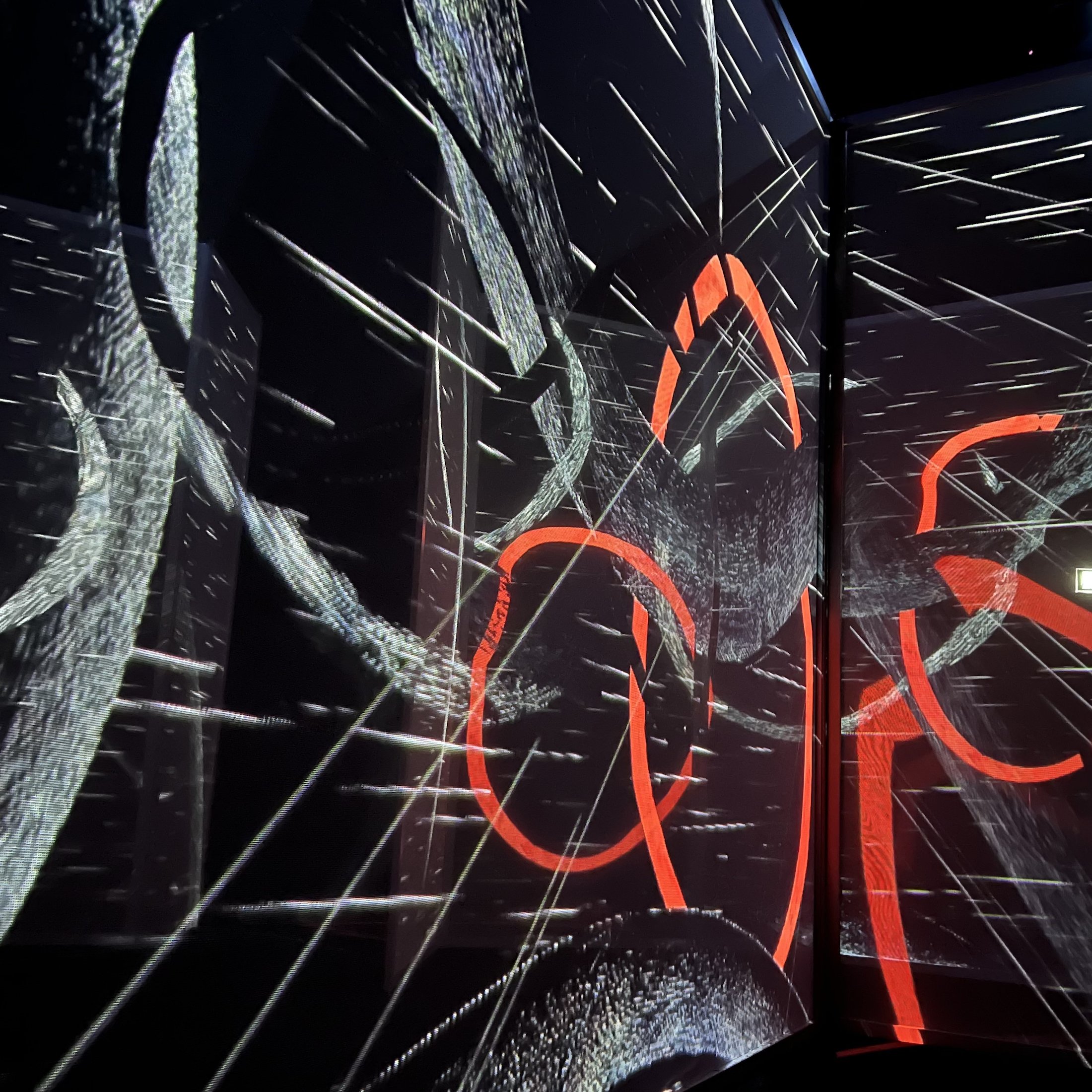Why is immersive art so popular?
Motion tracking at the Frameless Art Exhibition (London)
Immersive art has been a staple of the art world since the 1960’s, but in recent years, technology such as virtual reality, augmented reality and motion tracking, along with the re-imagining of the work of old masters, have contributed to the huge increase and popularity of immersive art exhibitions.
Immersive art tends to be inviting and inclusive, making it appeal to people of all ages. In this blog post I provide information about what immersive art exhibitions are and why they are worth visiting.
Contents
What is an immersive art experience?
How is an immersive art show different from a museum?
Who would enjoy an immersive art experience?
How are immersive art experiences made?
What is an immersive art experience?
Immersive art experiences are art installations that primarily use technology to absorb the viewer in the artworks. Techniques include:
Virtual reality
Augmented reality
Mirror and lighting effects
Projections
3D displays
Viewer participation
Music and audio
Motion tracking
These techniques give the viewer an exciting and absorbing way to experience artwork.
How is an immersive art show different from a museum?
Frameless Art Exhibition - Monet Projection
In a traditional museum or art gallery, the expectation is for exhibitions to be on display and for visitors to experience the exhibits in a very quiet, contemplative manner.
Museums and traditional art galleries are usually silent and can feel exclusive. In contrast, immersive art shows and exhibitions use technology and participation to display art in exciting and vibrant ways.
In the case of immersive art exhibitions that display the work of well known masters, there can be areas where visitors can try to draw in the manner of the artist, virtual reality headsets, so visitors can experience the world of the artist and other techniques that can breathe fresh new life into artworks that the audience are hugely familiar with. They can also attract a wider audience to the well known artwork.
Who would enjoy an Immersive Art Experience?
Immersive art exhibitions appeal to a much wider audience than traditional art exhibitions, for example:
For people who do not normally visit traditional art galleries, immersive art feels more inviting and inclusive.
For people who love visiting traditional art galleries, it can be refreshing to experience artwork in a new and exciting way.
Immersive art exhibitions appeal to children as they can get involved with the artworks, keeping their attention for far longer.
The expectation to be quiet and contemplative in traditional art galleries can discourage parents who are worried about their children staying calm and quiet, whereas families can visit immersive art exhibitions and all ages will enjoy them.
Immersive art exhibitions often create exciting photographs, making them appeal to people who like to post their experiences on social media.
Who invented immersive art?
It may surprise people to realise that immersive art has been around since the 1960’s. Artists such as Yayoi Kusama in New York and Gustav Metzger in London can be considered two forebears of immersive art.
Yayoi Kusama is renowned for her ‘Infinity Mirror Rooms’. The first Infinity Mirror Room was in 1965 in Castellane Gallery, in New York. Since then, there have been over 20 different Infinity Mirror Rooms. For example, it is currently possible to view ‘Infinity Mirrored Room – Filled with the Brilliance of Life’ at the Tate Modern in London, running until 28 August 2023.
Gustav Metzger created ‘Liquid Crystal Environment’, a psychedelic light experience in 1965.
‘Light and Space’ is an art movement that originated in Southern California in the 1960’s. Light and Space artists had an interest in transparency, reflection, light and space. Their work was often experienced by the viewer as immersive art installations.
Immersive art exhibitions popped up regularly during the 1970’s and 1980’s, but it wasn’t until the 21st Century that immersive art really started to take off.
In the early 21st Century many galleries put on exhibitions by contemporary artists, but it has been the use of emerging technologies and the addition of the re-imagining of the work of old masters that has caused an explosion of immersive art exhibitions in the last few years.
While there have been immersive art exhibitions of masters such as Pablo Picasso, Gustav Klimt and Frida Khalo, it is the work of Vincent Van Gogh that is most often displayed in this manner.
The first Vincent Van Gogh immersive experience was in 2008, devised by Annabelle Mauger. Mauger was inspired by a model created by her husband’s grandfather known as “Image Totale”. The experience was titled "Imagine Van Gogh: The Immersive Exhibition".
How are immersive art experiences made?
Immersive art exhibitions are made in a wide variety of ways, including:
Virtual reality - Take a journey through famous artwork, viewing the inspiration behind the paintings
Augmented reality - Technology is used to superimpose images and sounds on top of real objects.
Mirror and lighting effects - Mirrors, lights and space are manipulated to create a specific experience for the viewer.
Projections - Artwork is projected onto all four walls of a vast room and music is often played to create an immersive experience of well know masterpieces.
3D displays - Well known artwork is recreated as layers into a 3D display that the viewer can move around, almost like a sculpture.
Audience participation - An opportunity to create artwork in the manner of a particular artist and project your work onto a wall.
Motion tracking - Visitors can use their own gestures and movement to change the painting while it is being projected.
Music and audio - Sounds and music are used to heighten the art experience.
Where can I see immersive art exhibitions?
Immersive art exhibitions can be found in most major cities, such as London, Paris, New York and Los Angeles, amongst many others.
How much do immersive art exhibitions cost?
Immersive art experiences can be expensive, and often cost more than an entry to a traditional art gallery. In London, whilst prices can vary, expect tickets to start at around £25 per person.
The exhibitions may also only allow entry for a set time period, which in some cases may only be for a few minutes, so it is best to check the details before booking.
FAQs
1. What are the origins of immersive art?
Immersive art has its origins in the avant-garde art movements of the early 20th century, such as Futurism, Dadaism, and Surrealism. These artists sought to break down the boundaries between art and life, and to create works that engaged the viewer in a sensory and intellectual experience.
2. What are immersive exhibitions?
Immersive exhibitions are art installations that create a fully immersive experience for the viewer, often using multimedia and interactive elements. These exhibitions blur the line between art and the viewer, inviting the viewer to participate in the artwork and become a part of the experience.
3. Why do people like immersive art?
People like immersive art because it provides a unique and engaging experience that goes beyond traditional forms of art. Immersive art allows the viewer to become an active participant in the artwork, rather than simply observing it from a distance.
4. What are examples of immersive?
Examples of immersive art include installations like Yayoi Kusama's Infinity Rooms, where the viewer is surrounded by an endless expanse of reflective surfaces and light; and teamLab's digital artworks, which create interactive and immersive environments using technology.
5. What creates an immersive experience?
An immersive experience is created by combining various sensory elements, such as sound, light, and movement, to create a fully immersive environment. The experience should be engaging and transformative, transporting the viewer to another world or state of mind.
6. What is immersive technique?
Immersive technique refers to the methods and technologies used to create immersive experiences, such as projection mapping, virtual and augmented reality, and interactive installations.
7. What are immersive elements?
Immersive elements can include sound, light, movement, touch, and even scent, all of which are used to create a fully immersive environment that engages the viewer's senses and emotions.
8. What are the benefits of immersive experiences?
The benefits of immersive experiences include increased engagement and emotional connection, greater retention of information, and the ability to create memorable and transformative experiences.
9. What is the impact of immersive art?
The impact of immersive art is that it provides a unique and transformative experience for the viewer, blurring the line between art and life.
10. What is the future of immersive experiences?
The future of immersive experiences is likely to involve even more advanced technologies, such as haptic feedback, biometric sensors, and artificial intelligence, which will create even more immersive and personalised experiences for the viewer.
I hope you have found this blog post useful. If you have any other information about Immersive Art Exhibitions you think I should include here, please email me at [email protected].

